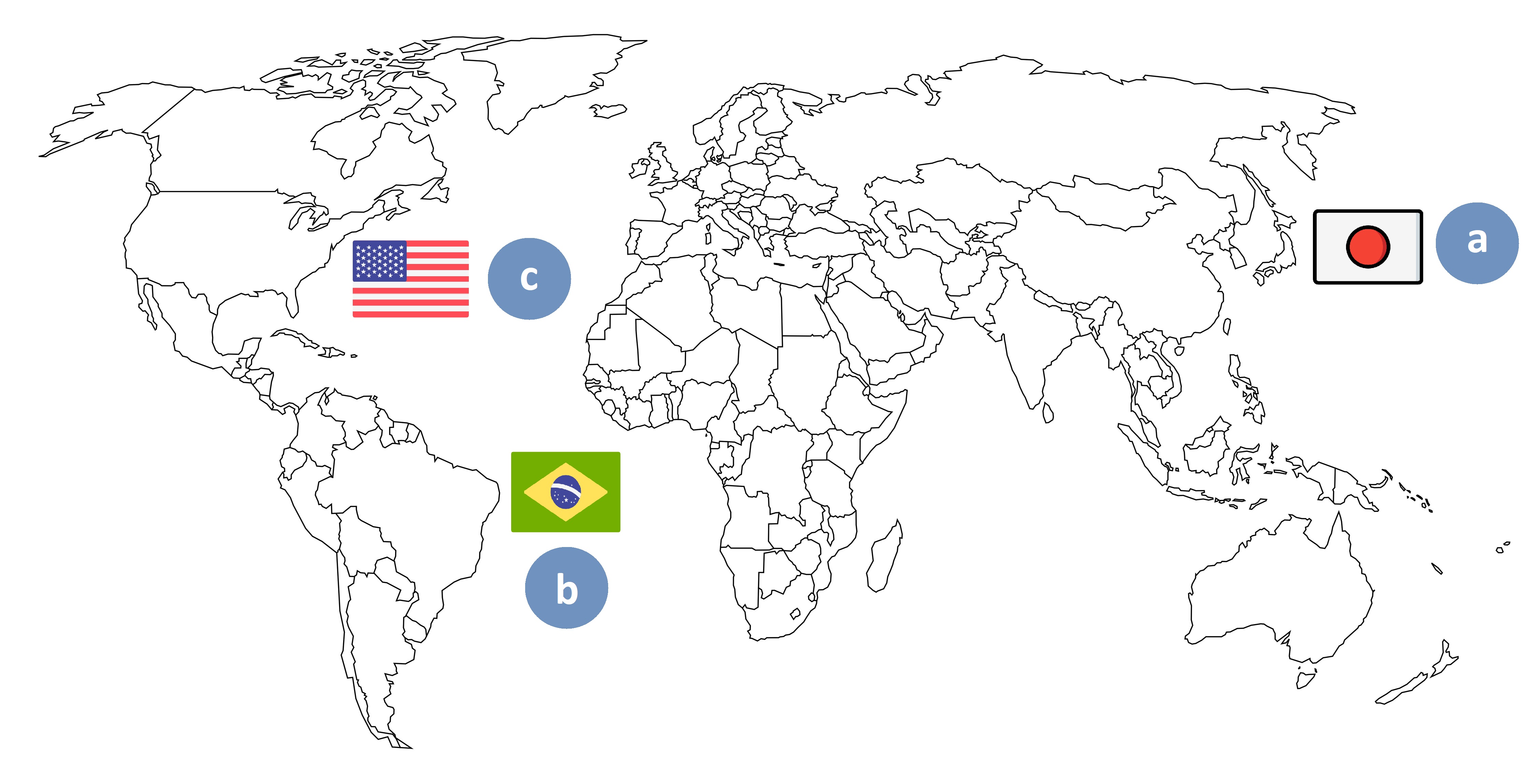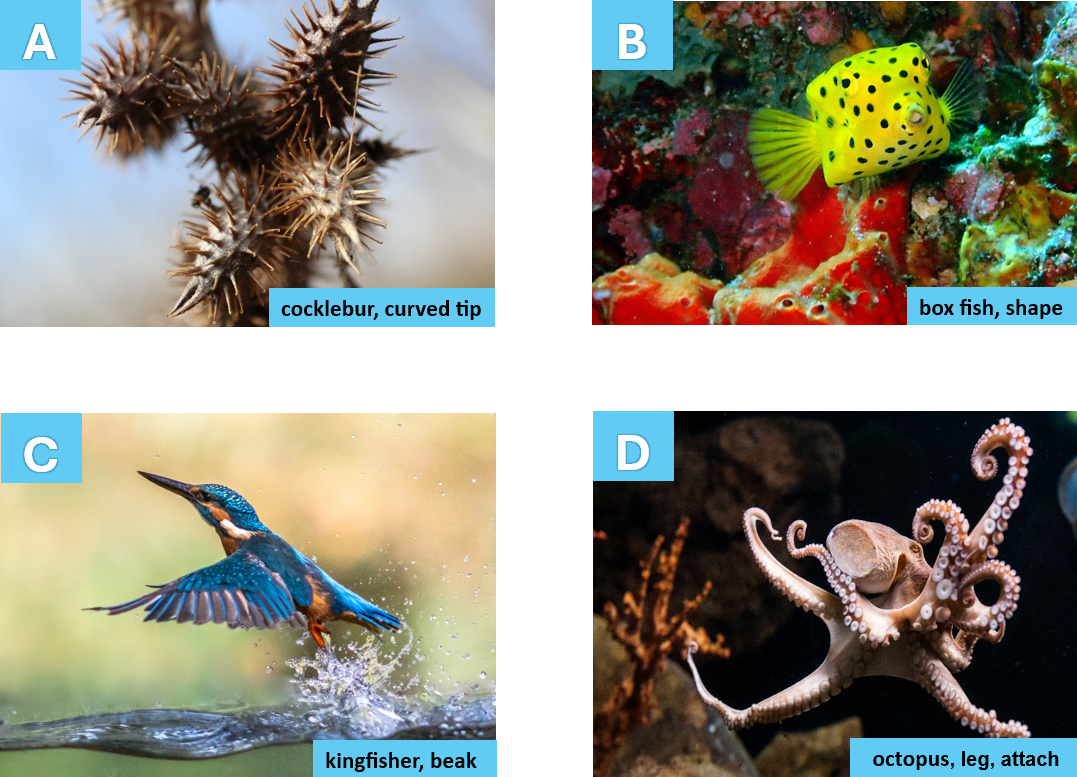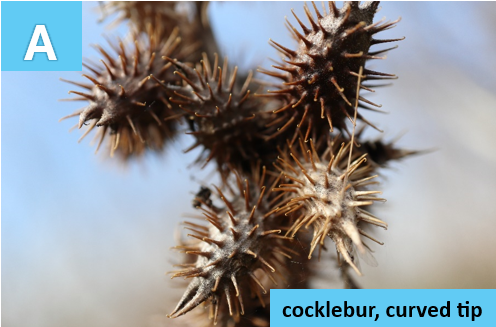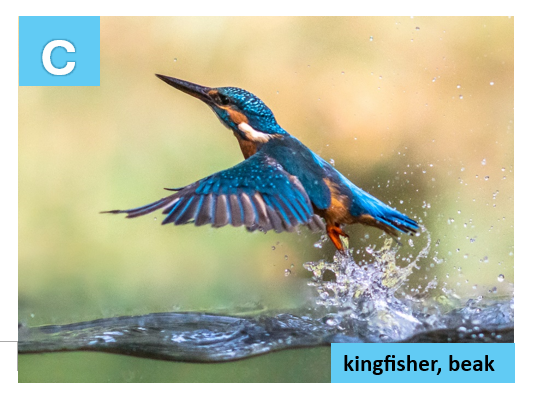
– Follow the instructions in the tutor guide, which are in red font.

– Follow the instructions in [PART A_1] and [PART A_2] in the tutor guide, which are in red font.

| a. | Buy some kitchen tools. |
| b. | Find an online gift store. |
| c. | Give Kate lots of pictures. |
| d. | Choose a plate and a book. |
| Answer: |

| a cookbook | 料理本 |
| a plate | お皿 |

– Follow the instructions in [PART B_2] , [PART B_3] and [PART B_4] in the tutor guide, which are in red font.

insert hint if needed
| shape | 形 | |
| a tote bag | トートバッグ | |
| a backpack | リュック |
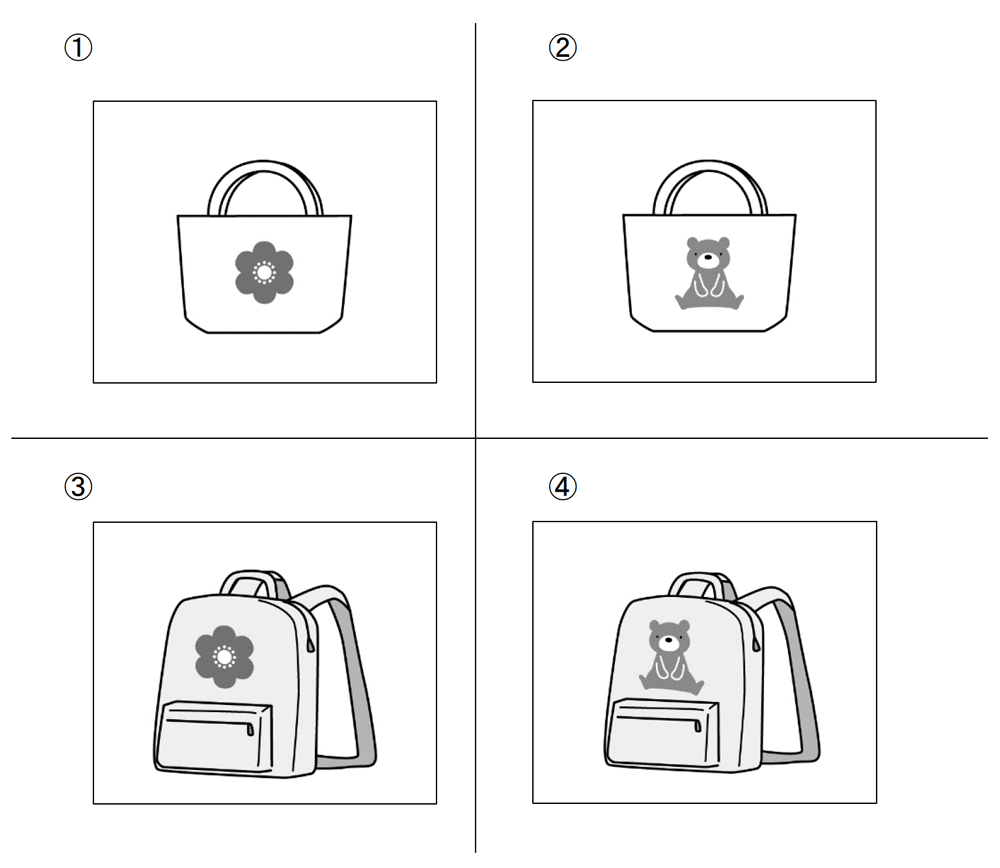
| 1. | Look at pictures 1 and 3. What is the difference between pictures 1 and 3? |
| Answer: | The difference between pictures 1 and 3 is the _______. Picture 1 is a ____________. Picture 3 is a ____________. |
| 2. | Look at pictures 3 and 4. What is the difference between pictures 3 and 4? |
| Answer: | The difference between pictures 3 and 4 is the prints. Picture 3 has a ( teddy bear / flower ) printed on it. Picture 4 has a ( teddy bear / flower ) printed on it. |


| 3. | I will read a passage once. Choose the most appropriate answer to the question. Please listen carefully. |

| 3. | Which picture matches the script? |
| Answer: | I think picture ___ matches the script. |
| 4. | Why did you choose that picture? Please tell me the reason and describe the picture you chose. |
| Answer: | I chose picture ___ for two reasons. First, it has a ( teddy bear / flower) printed on it. It looks like Sally’s favorite. Second, it should be a ( tote bag / backpack ), so she can use both hands while carrying it. |


– Follow the instructions in [PART C_2] in the tutor guide, which are in red font.

Look at the graph below. It shows the relationship between happiness and health. What can we learn from this graph? Please read the information silently. You have one minute to read.
Studies show that happiness affects both mental and physical health. The graph below explains this. The X-axis shows happiness levels from low to high. The Y-axis shows health scores from 0 to 50.
| happiness | 幸福 |
| relationship | 関係性 |
| studies | 研究 |
| affect | 影響を与える |
| mental | 精神的な |
| physical | 身体的な |
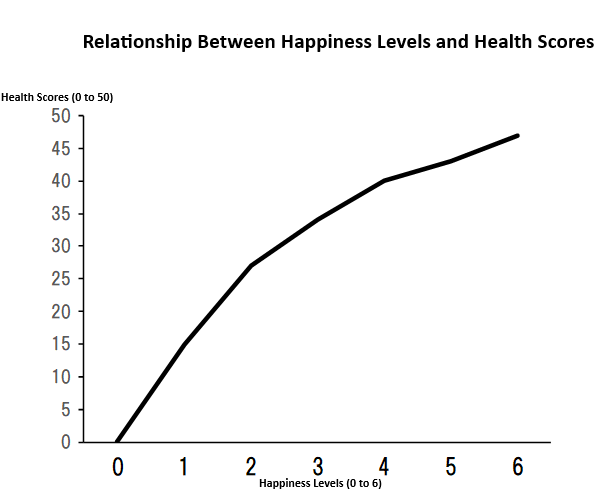
| 1. | When people have a low health score, is their happiness level high or low? |
| Answer: | When people have a low health score, their happiness level is ____. |
| 2. | When people have a high happiness level, is their health score high or low? |
| Answer: | When people have a high happiness level, their health score is _____. |
| 3. | Based on your answers to 1 and 2, explain what you can see in the graph. |
| Answer: | The graph shows that as ________ levels increase, health scores increase. On the other hand, as happiness levels decrease, _________ scores decrease. |

| increase | 増加する |
| decrease | 減少する |

– Follow the instructions in [PART D_2] in the tutor guide, which are in red font.

| a student council officer | 生徒会役員 | |
| it was decided to … | …することが決定した | |
| replace | 交換する、買い替える | |
| in charge of … | ..を担当する | |
| purchase | 購入する | |
| compare | 比較する |

| delivery time | 納期 | |
| per … | …あたり | |
| approximately | およそ | |
| come with … | …付き | |
| unknown | 不明の | |
| lack of stock | 在庫切れ | |
| repair warranty | 修理保証 |

| 1. | Both ②MF-3774 and ④XP-6530 … |
| a. | are cheaper than the other printers, but lack stock |
| b. | are cheaper than the other printers and come with a repair warranty |
| c. | can be purchased for less than $350 and can print in color |
| d. | can print only in black ink and be repaired for free forever |
| Answer: | |
| 2. | Which parts of the information make you think that? |
| Answer: | Looking at the prices and warranties, both ②MF-3774 and ④XP-6530 are __________ than other printers and _______ with a warranty. So, I think ___ is the correct answer. |


– Follow the instructions in [PART E_3] in the tutor guide, which are in red font.

*entire すべて

|
Nadia
|
Hey, John. Are you still reading books? |
|
John
|
Hello, Nadia. I know it might seem old-fashioned, but I can’t help it. |
|
Nadia
|
Reading books is not necessary to learn things in the twenty-first century. You can look up anything you want online. |
|
John
|
I read books for many reasons, not just to learn new things. I enjoy the feel of it. |
|
Nadia
|
Hmm… I don’t get it. What do you mean? |
|
John
|
Well, I feel like I’m really reading. It’s different when I read something on a screen. |
|
Nadia
|
Oh, I got it! You’re saying you love the feel of paper books. |
|
John
|
Yes, it’s a completely different experience from reading an e-book. |
|
Nadia
|
Ah, I see. But that’s something my grandparents would say. |
|
John
|
Maybe it is. |
old-fashioned 古い
necessary 必要
twenty-first century 21世紀
experience 体験、経験
completely 完全に

| 1. | What are they talking about? | |
| Answer: | They are talking about ______ books and e-books. | |
| 2. | Between Nadia and John, who agrees and who disagrees with paper books? | |
| Agree: | _______ agrees with paper books. | |
| Disagree: | _______ disagrees with paper books. | |
| 3. | What is one of the opinions in the conversation that agrees with the topic? |
| Answer: | He enjoys the __________ of reading a paper book. |
| 4. | What is one of the opinions in the conversation that disagrees with the topic? |
| Answer: | We can look up anything you want ________. |
| 5. | If you agree with the topic, what do you think is a good point? |
| Answer: | I think ______________________ is a good point. |
– You can write in the book. 本に書き込める
– It does not need a battery. バッテリーを気にしなくていい
| 6. | If you disagree with the topic, what do you think is a bad point? | |
| Answer: | I think ______________________ is a bad point. |
– It is heavy to carry. 持ち運びが重い
– It takes up space. 場所をとる
| 7. | Finally, please tell me your own opinion. Do you agree that paper books are better than e-books? | |
| Answer: | I agree. / I disagree. Because ____________________________________. |




|
Do you read books? Why do you like (or not like) reading books? Do you think reading books help you in the future? Why? What do you like to do in your free time? |
| Answer: |











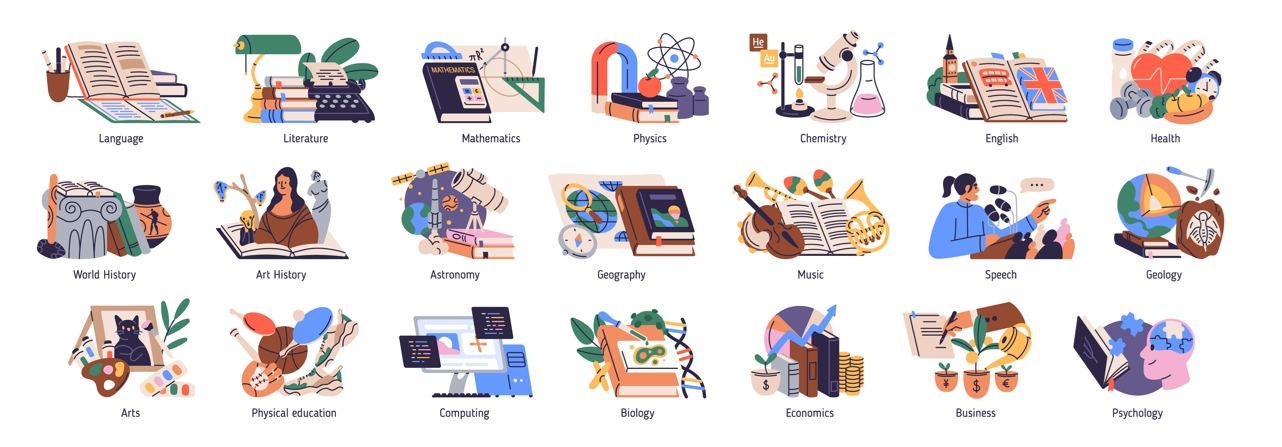
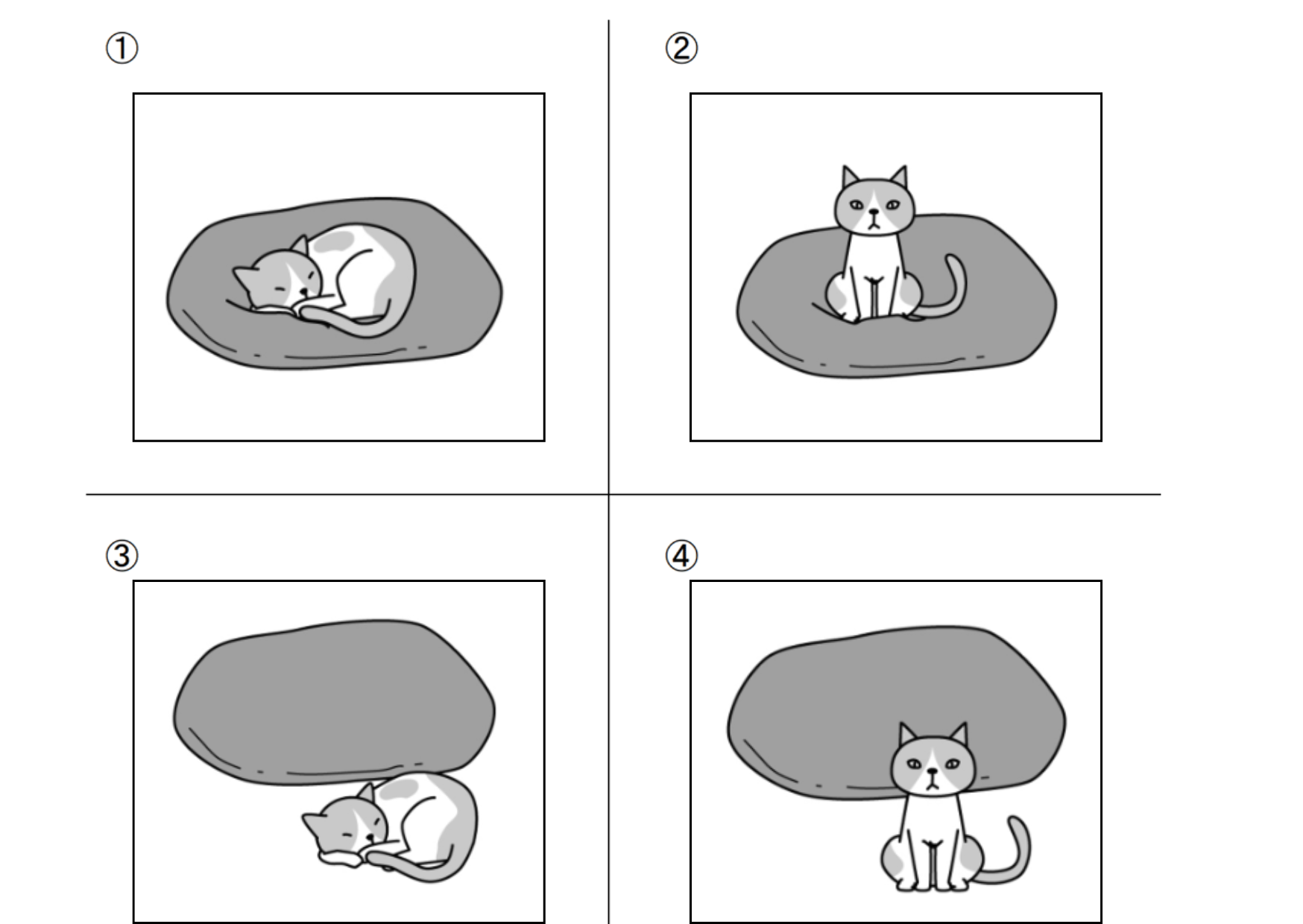
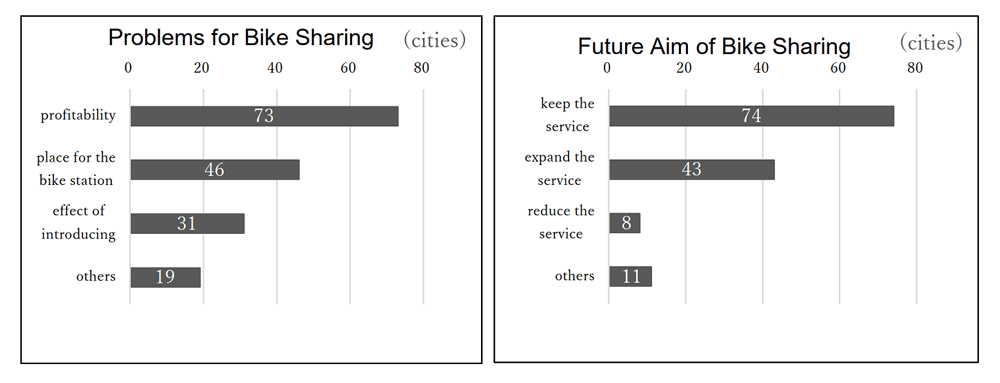
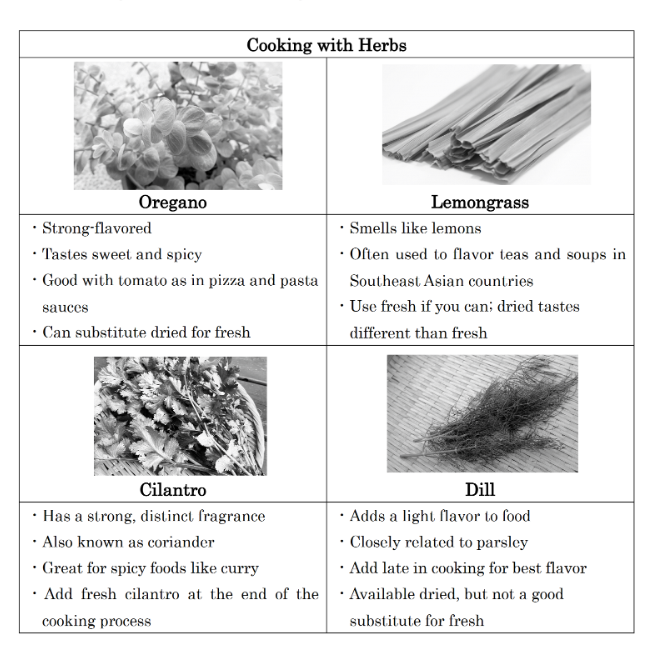
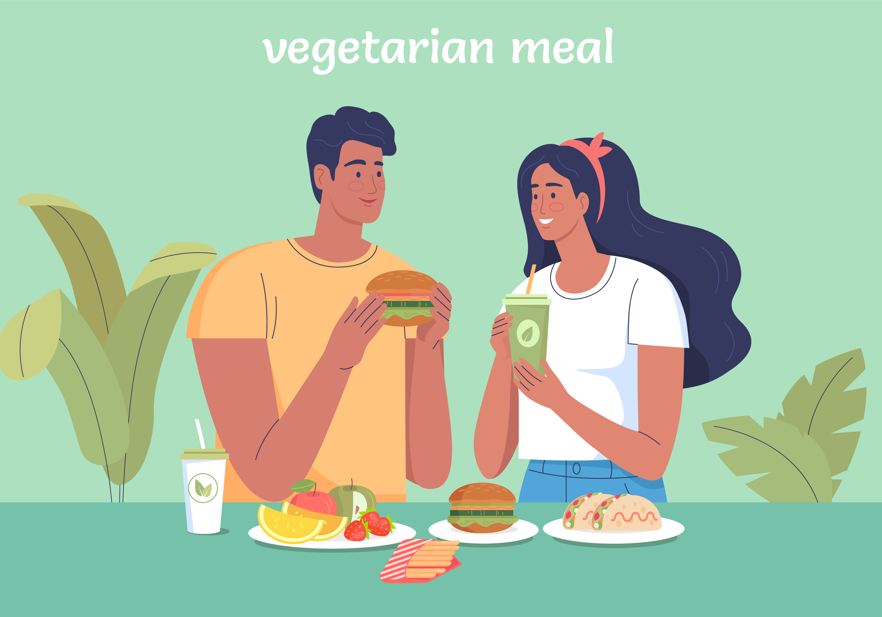
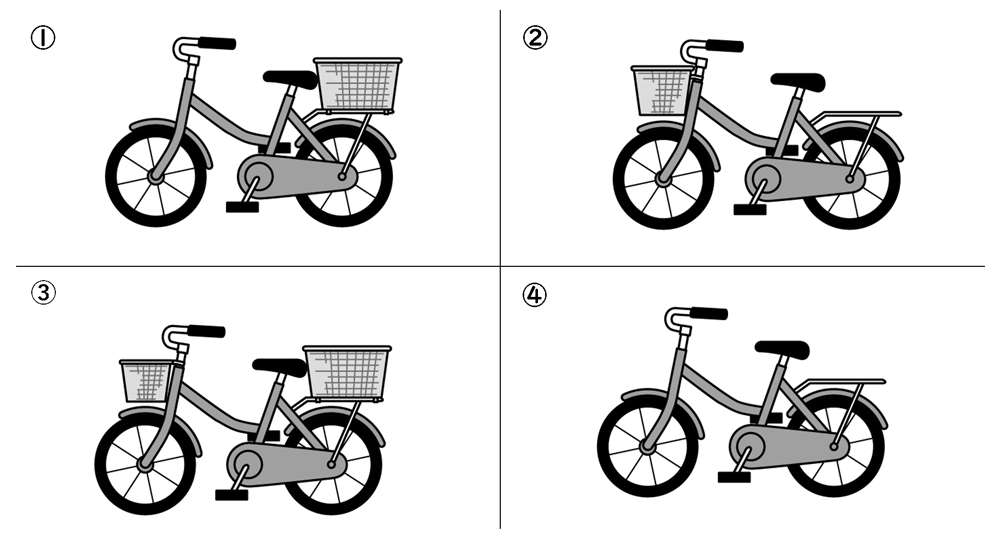
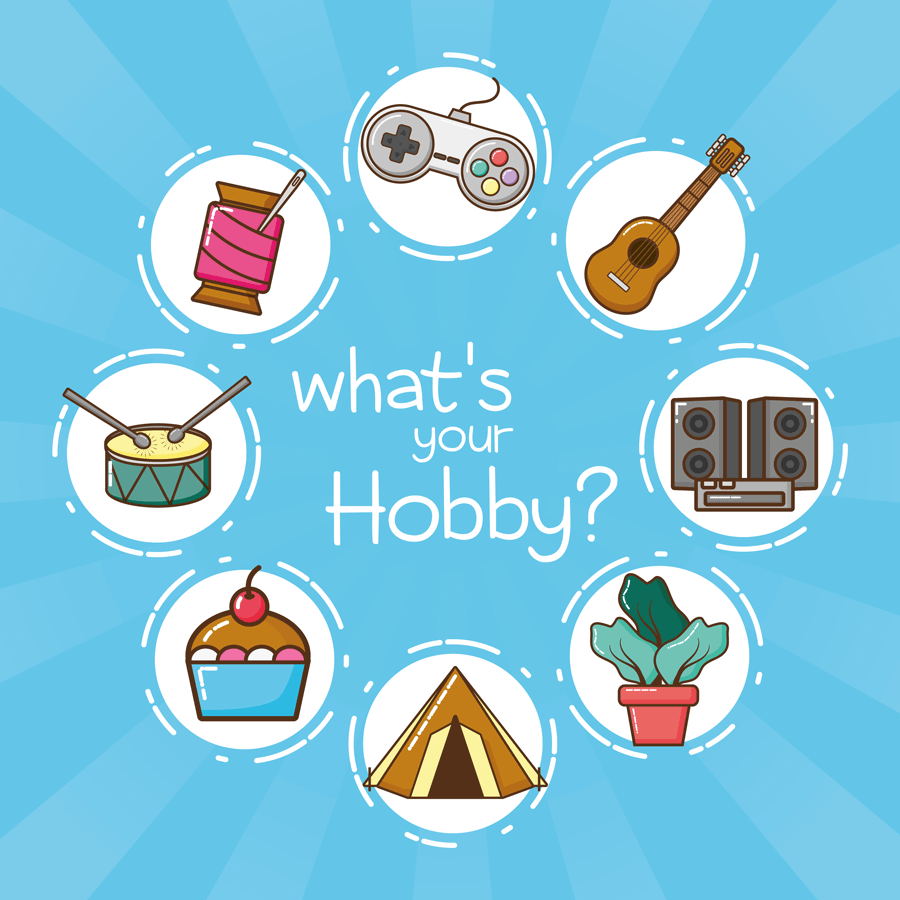
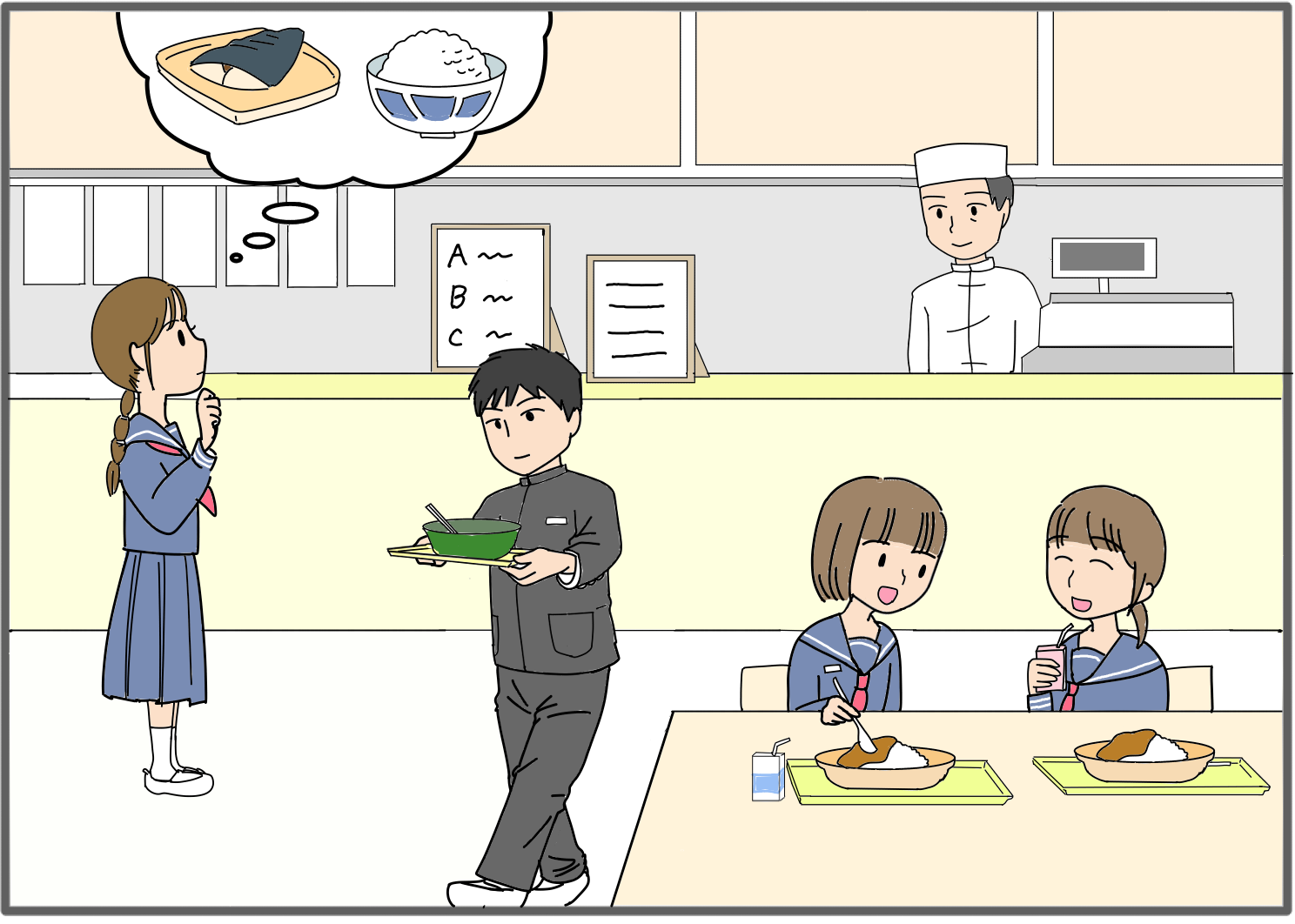
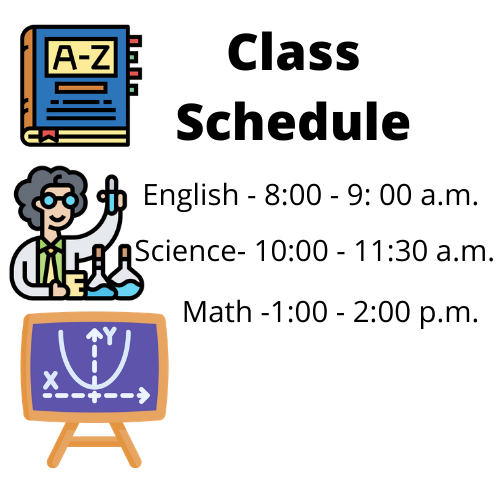
 GOOD
GOOD 





